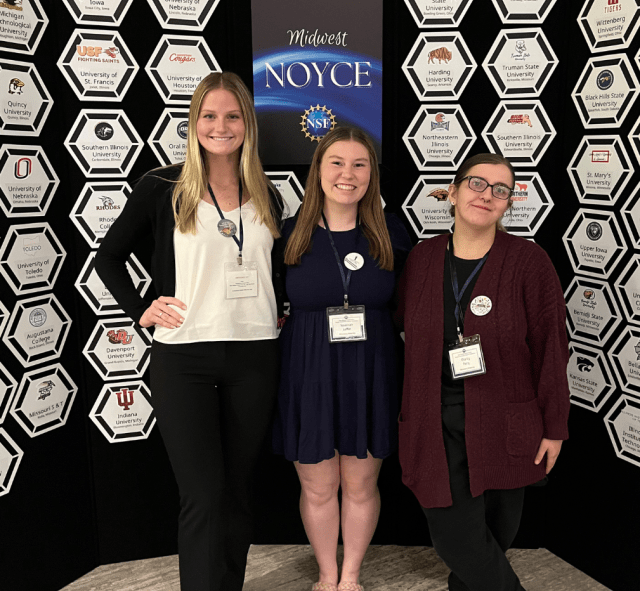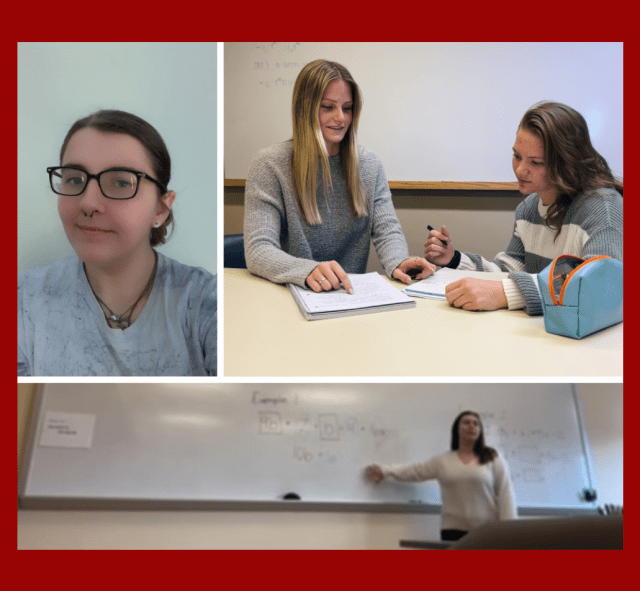Justin Houseknecht, professor of chemistry and department chair, has taken his commitment to student success to a whole new level over the last seven years, and those efforts are attracting international attention. The Royal Chemistry Society recently interviewed him and Lucy Bates, a biochemistry and molecular biology major from the class of 2022, for an article in Chemistry World about their research on student learning during the switch to online learning last spring as a result of the coronavirus pandemic. A proponent of active, hands-on learning, Houseknecht reflects here on the evolution of his teaching process, the successes that have resulted, and his efforts to share those methods with other chemistry faculty.
I’ve been passionate about learning for as long as I can remember. As a student, I enjoyed learning and understanding disparate topics deeply. The more complex the topic, the better. This both enabled me to excel academically and help my classmates understand the material better. Eventually I came to realize that helping others learn was even more rewarding than learning material myself – teaching builds upon my own understanding, enables me to solve problems creatively, and allows me to contribute to the intellectual and emotional growth of others in a meaningful way.
Motivated by my deep desire to see students succeed and the satisfaction of observing their growth, I had become a reasonably effective teacher by the time I started at Wittenberg in 2005. I spent most of the next eight years making my lectures more engaging, revising the curriculum, and providing more resources to my students. It was rewarding to see my top students flourish, but I remained frustrated that none of these efforts improved the 75% success rate (C- or better) in my organic chemistry classes. Fortunately, I had more to learn.
A National Science Foundation-sponsored faculty development workshop I attended in 2013 marks the turning point in my teaching career. I was invited to facilitate a few sessions because of my expertise in organic chemistry curricular design and assessment, but the workshop was primarily about active learning methods in organic chemistry. The other facilitators described theories and research that finally enabled me to understand why all of my previous efforts had failed a quarter of my students: All learning is active. Only as students actively engage with material does learning occur.
Student motivation, prior knowledge, and capacity (relative to content complexity) increase their ability to actively engage with the material rather than passively record it. Although my best students were able to interact with course content during class, many were unable to do so because the material was near or above their current ability to understand. The only viable way to improve these students’ understanding was to start using teaching methods designed to actively engage all students with the material during class time – active learning.
The active learning methods I’ve been using since 2013 improve student learning for several reasons.
- First, pre-class assignments encourage students to interact with the material before class, thereby increasing their prior knowledge.
- Second, student agency is increased as they realize that the material we cover in class is determined by their responses to one of the pre-class assignments.
- Third, working collaboratively in groups of three to four students increases their communal capacity such that they can engage with material that would otherwise be too difficult for them. The collaborative work then increases their individual capacities such that they can engage with the material individually.
- Fourth, groups record the audio-visual solutions on iPads which enables us to emphasize process over result. Integration of the oral and visual explanations facilitates learning (for the speaker and listeners) more effectively than either alone. Finally, the recordings enable us to review their solutions immediately and discuss any misconceptions they have.
Implementation of these active learning methods has been really successful. Student learning has improved as measured by significant improvement in scores on cumulative final exams. The percentage of students getting A’s and B’s has more than doubled and the success rate (C- or better) has increased from 75 percent to 85-95 percent. I still have more to learn, but these improvements have been encouraging.
I was fortunate to learn about active learning in 2013 and have subsequently been fortunate to share my understanding with others. Through service on the leadership board of Organic Education Resources (www.OrganicERs.org), I’ve facilitated more than a dozen workshops on active learning in organic chemistry with hundreds of faculty from around the country, served as lead editor on Active Learning in Organic Chemistry: Implementation and Analysis (American Chemical Society Books) which highlighted the successes of about a dozen workshop attendees, and worked with Wittenberg students to assess the effectiveness of the workshops I facilitate. I’ve also written several book chapters and peer-reviewed papers about the use of iPads in organic chemistry education. Looking to the future, I see opportunities to help other faculty realize that to improve student learning, particularly in organic chemistry, we must find ways to help students engage more actively with the material. I look forward to the lessons I will learn in the process.
To read more on his book, click here.







